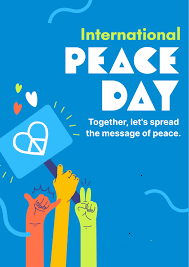Understanding the Global Context of Conflict
In recent years, the landscape of global conflict has undergone significant transformations, leading to an alarming increase in violence and suffering for millions of individuals worldwide. As of 2023, various regions are marked by persistent wars, civil unrest, and a resurgence of extremist violence, which collectively create a challenging environment for achieving lasting peace and security.
According to reports from international organizations, over 70 million people have been forcibly displaced due to conflict and persecution. This staggering number highlights the human toll of ongoing violence, as families are uprooted from their homes and communities torn apart. Countries such as Syria, Yemen, and Afghanistan exemplify how prolonged conflicts disrupt lives, threaten human dignity, and impede access to basic needs such as food, healthcare, and education.
The impact of conflict extends beyond immediate physical harm; it fosters humanitarian crises characterized by widespread poverty, health emergencies, and the breakdown of essential services. For instance, UNICEF reported that millions of children are now out of school due to armed clashes, exposing them to risks such as recruitment into armed groups, human trafficking, and exploitation. Furthermore, the psychological scars of war have long-lasting effects on individuals, particularly vulnerable populations such as women and children.
The rise in violence has also prompted an urgent call for collective action among nations, governments, and civil societies. The global community faces the pressing need to acknowledge and address the interconnected nature of modern conflicts, which are often fueled by economic disparities, political instability, and social grievances. Immediate efforts are essential to provide humanitarian aid, promote conflict resolution through dialogue, and support initiatives aimed at building peace and resilience in affected communities.
The Ripple Effect of War on Society
War has profound and far-reaching consequences that ripple through societies, transcending borders and impacting individuals and communities worldwide. The immediate effects of conflict may seem localized, but as hostilities persist, the repercussions manifest in various forms, influencing socio-economic dynamics, educational opportunities, and community structures far beyond the battlefield.
One major consequence of war is migration and displacement. People fleeing violence are often forced to leave their homes, leading to mass exoduses. This migration can strain resources in neighboring countries, leading to heightened tensions and competition for limited services. Displaced populations frequently face challenges such as inadequate housing, healthcare, and access to education, exacerbating the cycle of poverty and instability. Consequently, the influx of refugees can create social friction and economic difficulties for host nations, illustrating how a conflict in one area can affect societies worldwide.
Furthermore, war disrupts educational systems, severely curtailing children’s opportunities to receive a proper education. Schools may be damaged or repurposed for military use, drastically reducing the availability of educational facilities. The long-term effects of this educational disruption manifest in a generation of youth deprived of vital skills and knowledge, hindering their ability to contribute positively to their communities as well as the global economy. Additionally, family units are often shattered as members become casualties of war or are separated during displacement, leading to a breakdown in social structures that traditionally support individuals and communities.
This interconnectedness emphasizes that global peace is not merely the absence of conflict but involves addressing the myriad consequences that war inflicts on far-reaching scales. The responsibility for fostering peace lies not just with those directly involved but requires collective efforts from all of society to mitigate the adverse impacts of conflict.
The Importance of Collective Action for Peace
Collective action is a fundamental pillar in the pursuit of peace, requiring the concerted efforts of individuals, communities, and nations. This collaboration serves to not only foster an environment of mutual respect but also to dismantle the underlying structures that perpetuate cycles of violence. The interconnectedness of global societies underscores the importance of recognizing our shared responsibilities in mitigating conflict and promoting harmony.
Violence often emerges from systemic issues such as racism, dehumanization, and the proliferation of misinformation. These elements can fragment communities and undermine social cohesion, leading to escalated tensions and division. By advocating against these detrimental forces, individuals can play a pivotal role in reshaping narratives towards more inclusive and understanding perspectives. It is imperative that we prioritize education and dialogue, as these are essential tools in breaking down barriers and fostering unity.
Moreover, engaging in collective action at various levels can create ripples of change that extend beyond immediate environments. Community organizations, social movements, and international coalitions can amplify the call for peace and elevate the voices of marginalized groups. This collaborative approach emphasizes that promoting peace is not the sole responsibility of governments or institutions; rather, it is a shared obligation that begins at the grassroots level.
Reflecting on one’s role in this pivotal journey involves an honest assessment of how our actions and beliefs can either contribute to or detract from peace. By committing to kindness, respect, and understanding within our circles, we can inspire others to do the same. Every individual has the potential to influence their immediate surroundings positively, which is crucial in creating a global culture that cherishes peace and cooperation.
Steps Towards a Peaceful Future
Achieving a peaceful future requires a collective commitment to addressing the root causes of conflict and fostering an environment conducive to sustainable development. One of the first steps towards this goal is to enhance sustainable development initiatives. These initiatives provide basic needs such as food, education, and healthcare, which can significantly reduce tensions and disparities within communities. By investing in infrastructure and social services, we can create stable societies where individuals feel valued and empowered.
Engaging in dialogue is another vital strategy for promoting peace. Open discussions among diverse groups can lead to better understanding and collaboration. This can be facilitated through community forums, workshops, and peace dialogues that encourage participants to share their perspectives and experiences. Through dialogue, common ground can be established, paving the way for reconciliation and cooperation among conflicting parties. Additionally, building relationships across divides—be it cultural, religious, or political—can strengthen the fabric of communities and foster a sense of belonging and unity.
Individuals are urged to take immediate action by getting involved in local peacebuilding efforts. Volunteering with community organizations that focus on conflict resolution, education, or social justice can make a significant impact. Supporting humanitarian organizations that provide aid to those affected by conflict is essential, as these efforts often address immediate needs and help communities recover and rebuild. Furthermore, advocating for policies that prioritize peace and justice is crucial. This can include engaging with local representatives, participating in peaceful protests, or utilizing social media platforms to raise awareness about peace initiatives.
The pursuit of a peaceful future is not an individual endeavor but a collective responsibility. With concerted effort and commitment from all members of society, we can foster an environment where peace prevails and thrives.


